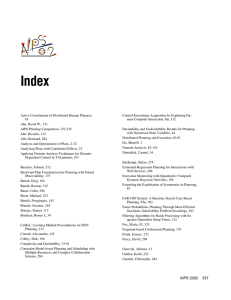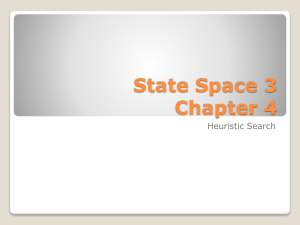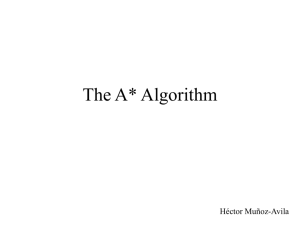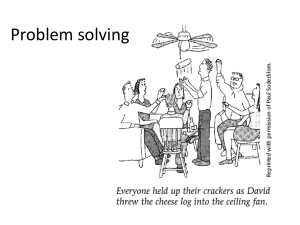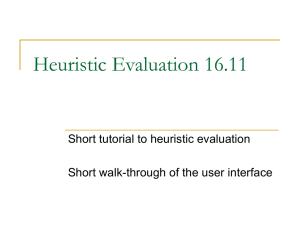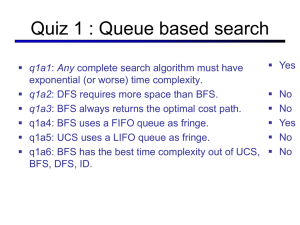Artificial Intelligence
advertisement
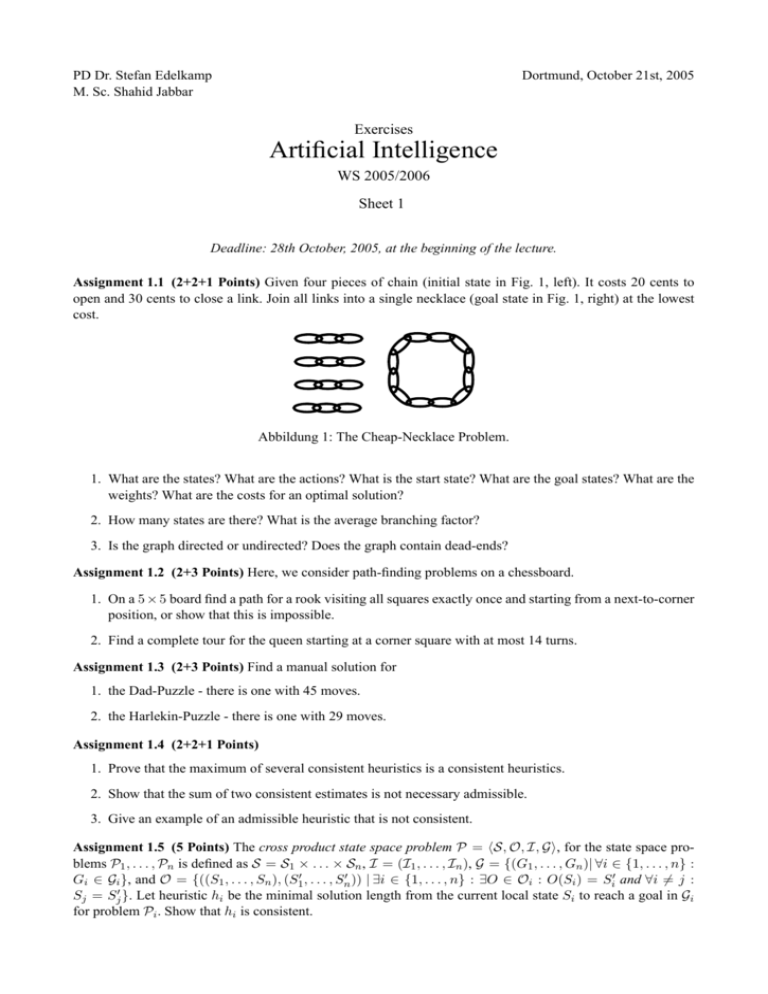
PD Dr. Stefan Edelkamp
M. Sc. Shahid Jabbar
Dortmund, October 21st, 2005
Exercises
Artificial Intelligence
WS 2005/2006
Sheet 1
Deadline: 28th October, 2005, at the beginning of the lecture.
Assignment 1.1 (2+2+1 Points) Given four pieces of chain (initial state in Fig. 1, left). It costs 20 cents to
open and 30 cents to close a link. Join all links into a single necklace (goal state in Fig. 1, right) at the lowest
cost.
Abbildung 1: The Cheap-Necklace Problem.
1. What are the states? What are the actions? What is the start state? What are the goal states? What are the
weights? What are the costs for an optimal solution?
2. How many states are there? What is the average branching factor?
3. Is the graph directed or undirected? Does the graph contain dead-ends?
Assignment 1.2 (2+3 Points) Here, we consider path-finding problems on a chessboard.
1. On a 5 × 5 board find a path for a rook visiting all squares exactly once and starting from a next-to-corner
position, or show that this is impossible.
2. Find a complete tour for the queen starting at a corner square with at most 14 turns.
Assignment 1.3 (2+3 Points) Find a manual solution for
1. the Dad-Puzzle - there is one with 45 moves.
2. the Harlekin-Puzzle - there is one with 29 moves.
Assignment 1.4 (2+2+1 Points)
1. Prove that the maximum of several consistent heuristics is a consistent heuristics.
2. Show that the sum of two consistent estimates is not necessary admissible.
3. Give an example of an admissible heuristic that is not consistent.
Assignment 1.5 (5 Points) The cross product state space problem P = hS, O, I, Gi, for the state space problems P1 , . . . , Pn is defined as S = S1 × . . . × Sn , I = (I1 , . . . , In ), G = {(G1 , . . . , Gn )| ∀i ∈ {1, . . . , n} :
Gi ∈ Gi }, and O = {((S1 , . . . , Sn ), (S10 , . . . , Sn0 )) | ∃i ∈ {1, . . . , n} : ∃O ∈ Oi : O(Si ) = Si0 and ∀i 6= j :
Sj = Sj0 }. Let heuristic hi be the minimal solution length from the current local state Si to reach a goal in Gi
for problem Pi . Show that hi is consistent.


